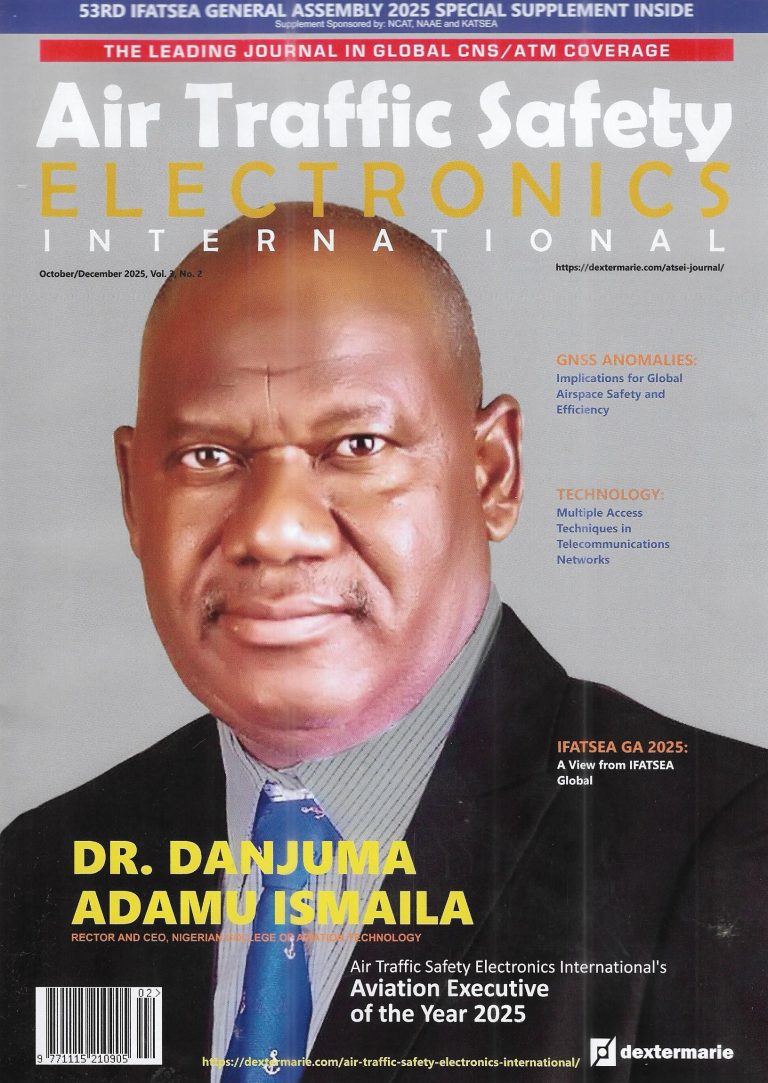

AHMED UMAR FAROUK: Re-engineering the Transformation of Air Navigation Service Provision in Nigeria

The global air navigation service community, just like the global aviation ecosystem, is in a state of flux, characterized by dramatic changes in techno-operational, regulatory, and business models. With the increasing digitalization, automation and virtualization of the air navigation services/air traffic management (ANS/ATM) landscapes as well as growing concerns regarding cyber security threats and the imminence of a large-scale incursion of artificial intelligence (AI) technologies into the ANS/ATM terrains, the need is certainly growing for the deployment of a pragmatic model of airspace management that is premised upon clear safety and efficiency objectives, whilst leveraging innovative technologies and the human components of aviation operations. And that is exactly the approach that Engr. Ahmed Umar Farouk, the Managing Director/Chief Executive Officer of Nigerian Airspace Management Agency (NAMA), has been latching onto for the continuing re-engineering of the monumental transformation of NAMA.
Ever since taking up the reins of office as the CEO of Nigeria’s air navigation service provider (ANSP), Engr. Farouk has covered a lot of grounds, recording impressive achievements across a wide variety of areas. Aside from introducing a management model that prioritizes collaborative efforts and emphasizes adequate training, re-training and motivation of the workforce, Farouk has been expending tremendous energy in infrastructure expansion and upgrade, leveraging the growing availability of innovative technologies to meet the growing demands of the global air navigation system.
Today, under Farouk, NAMA has attained self-sufficiency in terms of the periodic conduct of ground and flight checks on radio navigation aids as enshrined in Chapter 2 of ICAO Annex 10 and to the levels of accuracy specified in ICAO Doc 8071 (Manual on Testing of Radio Navigation Aids). To reach this milestone, Farouk acquired a wholly-owned Beechcraft 350i twin-engine turbo-prop aircraft equipped with the state-of-the art Airfield Technology’s AT940 flight calibration console, engaged a team of flight crew, aircraft maintenance engineers and flight inspection engineers, embarked on aggressive training and certification of the flight calibration team, and mapped out a vision for transforming the flight calibration team to a global force capable of providing ground and flight checks for ANSPs in Africa and beyond.
But this flight calibration milestone is not the only achievement NAMA has garnered under Farouk’s pragmatic leadership. Notwithstanding the increasing utilities and prospects of GNSS (global navigation satellite system) based positioning, navigation, and timing (PNT) services, Farouk’s pragmatic, incisive, and forward-thinking management posture is driving him to continue to invest heavily in ground-based navigation aids, rather than maintain a trajectory of phased de-commissioning of these conventional navigation aids, which could serve as robust backups in the event of GNSS unavailability and inaccuracy, which are becoming commonplace today particularly in conflict zones and the Middle East, the Baltic Sea, and eastern Mediterranean. Thus, NAMA’s continuing investment in ground-based navigation aids has witnessed the installation of new state-of-the-art ILS/DME in Lagos and Minna airports as well as the Nigerian Air Force (NAF) Base in Kaduna. The installation of VOR/DME systems has also been completed in Wachakal as well as the newly-upgraded Ibadan International Airport.
Likewise, there is also a frenzied upgrade of VHF (very high frequency) ATC radio communication systems across the entire swathe of the Kano FIR in a spirited effort to address observed ATC radio communication blind spots as well as provide improved coverage for the Agency’s satellite telecommunication-enabled extended ATC radio communication network. Twelve airports have been earmarked for this ATC radio communication upgrade using the state-of-the-art Jotron radio systems, with installation already completed in two airports – Enugu and Minna.
Through Farouk’s goal-savvy leadership style, the long-stalled AIS Automation Project (AAP) is fast nearing completion, with the VSAT infrastructure of the project fully in place in 26 out of a total of 27 airports. The AAP, the contract (Contract No. FMA/NAMA/4556) for which was perfected as early as 2006, is an ambitious domestic aeronautical satellite telecommunication network designed to provide upgraded voice services – integrating extended range VHF ATC radio communication or remote-controlled air-ground radio communication, air traffic services direct speech and telephony services – as well as data services, integrating monitoring and control data, AMHS data service, MET data, AIS/NOF/AIP, Mapping/Charting, and AIXM-based services.
In the realm of logistics, NAMA has purchased and distributed various operational vehicles to stations and airports to aid site inspections, as well as maintenance and repair works. From the inception of his management, Farouk has transitioned his management team well beyond the realms of operational logistics to addressing the welfare and competence of the NAMA workforce. This is because Farouk believes that safety and efficiency are a function of the level of motivation as well as the degree of competence of the workforce and he’s really doing a very good job at that.
All rights reserved. No part of this material or the content of this website may be reproduced or published in any form or by any means without the prior written permission of the publisher.
Contact: atsei@dextermarie.com



